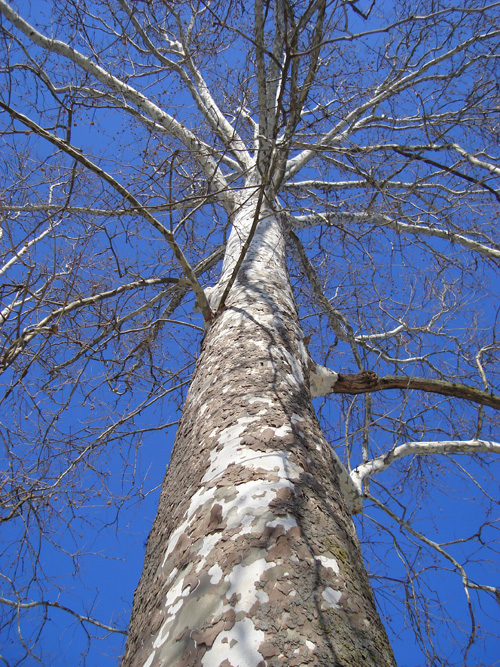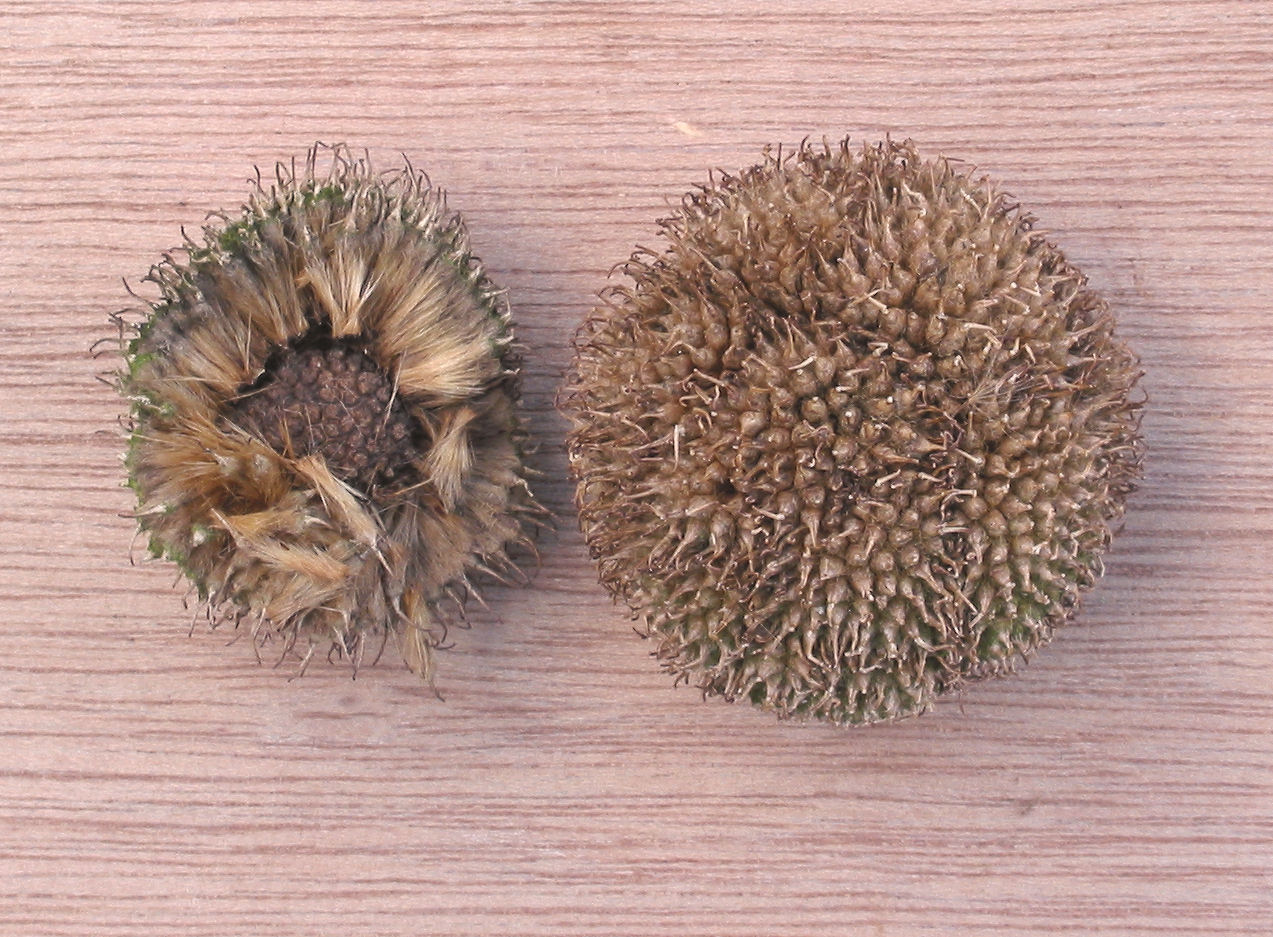Sycamore
No. in Woodland Park: 24
No. in good health: 9
No. in fair health: 12
No. in poor health: 3
Platanus occidentalis, also known as American sycamore, American planetree, occidental plane, and buttonwood, is one of the species of Platanus native to North America. It is usually called sycamore in North America, a name which can refer to other types of tree in other parts of the world.
An American sycamore tree can often be easily distinguished from other trees by its mottled exfoliating bark which flakes off in great irregular masses, leaving the surface mottled, and greenish-white, gray and brown. The bark of all trees has to yield to a growing trunk by stretching, splitting, or infilling; the sycamore shows the process more openly than many other trees. The explanation is found in the rigid texture of the bark tissue which lacks the elasticity of the bark of some other trees, so it is incapable of stretching to accommodate the growth of the wood underneath, so the tree sloughs it off.
The sycamore tree is often divided near the ground into several secondary trunks, very free from branches. Spreading limbs at the top make an irregular, open head. Roots are fibrous. The trunks of large trees are often hollow.
Another peculiarity is the way the leaves grow sticky, green buds. In early August, most trees in general will have—nestled in the axils of their leaves—the tiny forming bud which will produce the leaves of the coming year. The sycamore branch apparently has no such buds. Instead there is an enlargement of the petiole which encloses the bud in a tight-fitting case at the base of the petiole.


